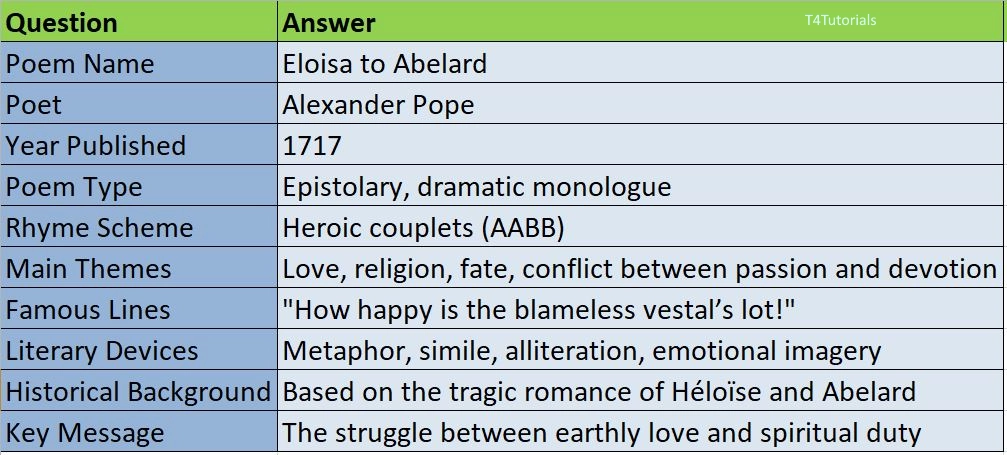Summary:
Eloisa to Abelard by Alexander Pope is an epistolary poem that explores the tragic love story between Héloïse (Eloisa) and Peter Abelard, two historical figures from 12th-century France. Written as a dramatic monologue, the poem captures Eloisa’s inner turmoil as she struggles between her passionate love for Abelard and her religious devotion. The poem is deeply emotional, filled with longing, guilt, and philosophical reflection on love, fate, and divine will. Pope’s use of heroic couplets enhances the lyrical and expressive nature of the poem, making it one of his most poignant works.
10
Score: 0
Attempted: 0/10
Subscribe
| Question | Answer |
| Poem Name | Eloisa to Abelard |
| Poet | Alexander Pope |
| Year Published | 1717 |
| Poem Type | Epistolary, dramatic monologue |
| Rhyme Scheme | Heroic couplets (AABB) |
| Main Themes | Love, religion, fate, conflict between passion and devotion |
| Famous Lines | “How happy is the blameless vestal’s lot!” |
| Literary Devices | Metaphor, simile, alliteration, emotional imagery |
| Historical Background | Based on the tragic romance of Héloïse and Abelard |
| Key Message | The struggle between earthly love and spiritual duty |